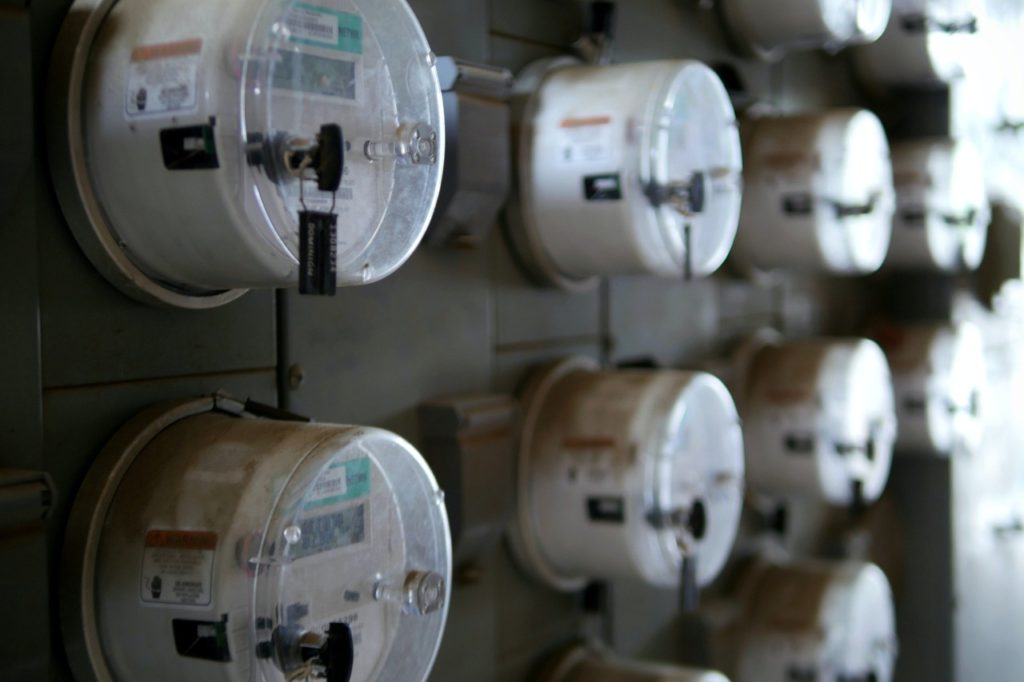The Beginner’s Guide to EMF Protection
Optimize your sleep, energy, and mental well-being by maximizing your protection with these essential tips.
Disclosure:
Some of the products I mention use affiliate links, which means if you click and make a purchase, I may earn a small commission. This is at no cost to you; some links may even offer you additional discounts (which I will specify). I only recommend products I have personally tried and loved. All opinions are my own, and try to support small businesses as much as possible by linking directly to them.
Since we’ve established a multitude of reasons why it’s essential to avoid unnecessary EMF exposure from our devices as well as the world around us, the obvious next step is to solidify the how. Due to the silently pernicious nature of EMFs and our inability to physically (acutely) sense these signals, protection may seem like a formidable task.
But do not despair! In order to know how to protect ourselves, we simply need to understand a few basic rules about how EMFs function.
1. There are four types of non-ionizing radiation to concern ourselves with, all of which operate a little differently:
- Radio and microwaves – this includes cell service, wifi, bluetooth, 5g, AM/FM radio signals, “smart” tech; the range for these wavelengths is vast (3Hz to several Ghz), but are typically measured in milliwatts per square meter (mW/m2). These will encompass the majority of our focus as they are the only signals our technology concertedly expands.
- Electric fields – these are generated by every electrical device and are measured in volts per meter (v/m).
- Magnetic fields – also generated by electrical equipment, the worst offenders are typically large appliances, heavy machinery, and power lines; they’re measured in milligauss (mG) or microtesla (μT).
- Dirty electricity – technically considered deviations from a pure 50-60H Hz sine wave, these are essentially unused currents within the wiring, outlets, fixtures, etc. caused by our devices’ inconsistent demand for power. These are trickier to isolate and measure, so we’ll discuss them in greater detail elsewhere.
2. Every wireless device sends and receives signals from some form of transmitter.
The most common transmitters are routers, cell towers, 5g antennas, and smart meters, all of which send signals at different frequencies at varying intensities. In order for your devices to receive these signals, they must emit signals of their own. This means your wireless ear buds are constantly pulsing to receive the signals from your phone, which, in turn, is both receiving signal from nearby towers while transmitting to your ear buds. Hence, if you’re using a wifi-connected computer near a router, your body is absorbing frequencies from at least two separate devices. This is why stacking even a few devices within a small space quickly creates a compounding effect.
3. It’s also important to understand how signals travel – and at what point their fields diminish.
Radio frequencies and microwaves adhere to the inverse square law: the magnitude of frequency drops “proportionally to the square of one’s distance from the source;” in other words, doubling the distance weakens the signal by fourfold. Thus, what seems like a minuscule distance can create a pronounced effect, especially in the case of cell phones and other devices we keep closest to us.
This concept can be quantified in the following formula:
I = I x D12/ D22
Where I = Intensity, whether measured in percentage or meter reading; D1 is the original distance; and D2 is the new distance. If you’d like to learn more about how the Inverse Square Law affects your exposure, you can check out a thorough guide on EMF Wise.
This law bodes well for securing safe locations, but is also why remaining within close proximity of household devices is often more detrimental than the “intimidating” large transmission hubs or cell towers in your neighborhood.
Since magnetic fields follow the inverse cube law, the energy generated from them drops much faster, which is why we’re less likely to encounter strong magnetic fields on a daily basis.
3. Certain structures and materials are impenetrable to various frequencies.
When it comes to passing through objects, not all frequencies are created equal. Generally speaking, the higher the frequency or the smaller the wavelength, the more easily it is to block. Additionally, buildings constructed of stone, bricks and cinder blocks are much more effective than newer building materials like drywall and composite boards; thus, denser structures will naturally offer greater protection against higher frequency radio and microwaves.
Better yet are certain metals and certain “shielding” materials that can either be used to block out frequencies by attenuating them or trapping them within a given location, as in the case of a Faraday cage. While highly effective, if not used responsibly, their effects can backfire by preventing offending signals from escaping a room or building.
The most optimal materials for attenuating EMFs are highly conductive metals such as:
- nickel
- silver
- tin
- copper
- aluminum
- mylar (not metal, but highly effective for attenuation)

Meanwhile, magnetic fields generated from our electric devices are effectively impossible to “block.” That’s why we must always prioritize distance.
Bearing these points in mind, now we can make informed decisions on the most optimal ways to protect ourselves. Sure, some factors remain outside of our control, but there are always steps we can make to mitigate our exposure.
Here’s how to keep yourself safe
1. Again, distance is key
Obviously, the more powerful the transmitter or device, the farther you need to be in order to limit your exposure, especially when it’s a place you spend the majority of your time. If you’re looking to move anytime soon, I highly recommend the distance of your future home be at bare minimum distance from the following:
- .25 miles from cell towers
- .5 miles from radio broadcast towers
- 700’+ away from high-voltage power lines
- 500′ away from transformer boxes
- 500′ away from electrical substations
- Roughly the opposite side of the street from above or underground neighborhood power lines (though voltage varies greatly)
- >.25 miles from 5G towers – note: their signal strength is highly variable, so it’s advisable to exercise additional caution: I’ve found them to be as powerful as cell towers!
To illustrate the importance of these figures, a salient longitudinal German study found a significant link between cancer and living within .25 miles of a cell tower, citing that “patients fell ill on average 8 years earlier” than those living outside of that range. Because of the inverse square law stated above, the exposure of inhabitants residing within the inner area was 100 times that of those living outside the quarter mile mark.
If you currently live within any of these distances and have been suffering some unexplained side effects, I highly encourage you look for a new place to live immediately. Even if you haven’t begun to feel ill, these sources are powerful physiological stressors.
Not sure how far your house is? Check the distance by plugging your address into AntennaSearch. Granted, it only displays cell towers (meaning no small cell antennas or power lines), but is incredibly useful prior to moving or traveling!
Safer at Home
1. Be smart with your smart devices.
Let’s keep this simple with some “Do”s and “Don’t”s for basic EMF protection:
- DON’T work with your laptop directly on your lap (what a non-aptly named device, huh?). The problem is that even new, lightweight models radiate powerful electrical, magnetic, and radio/microwave fields, especially when they’re connected to wifi, and those fields zap organs critical for hormone release and reproduction.
- DO unplug your router at night, at the very least. If you can convert to ethernet cables entirely, even better. You can purchase USB ethernet adapters for all sorts of devices – and keeping your work confined to a dedicated space is better for your mental headspace, to boot. Just ensure your wifi is actually off since some ISPs falsely display an “off” setting, requiring you to contact them directly (Xfinity is notorious for this).
- DO also adjust the power setting on your router if you must use wifi. By default, it’s set to 100% output, but unless you’re providing coverage to the entire block, it’s just not necessary. Changing it does not affect your speed, and a smaller range provides less visibility to outside hackers; this kind gesture also reduces your neighbors’ EMF. Just to demonstrate how overpowered they are, I had coverage everywhere in my 1000′ duplex at 10% signal strength.
- DON’T wear wireless devices of any kind. Even if it’s a fitness tracker – it’s a little ironic to install a device that takes a toll on our health. As was stated in the first section, distance determines the dose, and you cannot, under any circumstances get around this uncomfortable truth. There is no safe level of exposure, and even if your smart watch pulses at extremely low levels, it’s still attached to you for 16-24 hours. That’s not inconsequential.
- DON’T store your phone in your pocket. This is a no-brainer when you’re around the house, but especially for those of us gifted with large enough pockets, this is an easy habit to slip into.
- DON’T mount or store any home smart devices (security system, thermostat, Alexa, etc.) near high traffic living spaces, especially near sleeping areas. Instead, place them in an area where you’ll always be at least 6′, even 10′ if possible between them and yourself. But then again, I’m biased towards omitting them altogether. They still all produce electrosmog.
- DO use your phone on speaker or with (wired) headphones. Obviously, in public, you’ll want to keep those (wired) ear buds handy.
- DO be mindful of the idle time you spend on your phone. If you’re a casual social media scroller, log on to your computer and do it there instead. Go a step further and uninstall the apps on your phone. You might also be surprised how much time you end up saving.
- DO keep power supplies, cables, power strips, and extension cords at least 6′ away at all times. As much as I tout using desktop PCs, their bundles of cables and power strips are serial offenders for electric fields.
- DO be cognizant of your breaker box and keep a safe distance from its powerful electrical field. Even the floor above it can be potentially unsafe.
I’m sure, by now, you’re beginning to notice a pattern. Devices within a close proximity are huge no-nos to protecting yourself.
If you have children, it is imperative you keep all wireless electronics as far from them as possible – and never, under any circumstances, use them in a child’s bedroom (this includes baby monitors). If you let your child play with your phone, be sure to place it on airplane mode first.
3. Make your bedroom a sanctuary
The supreme method: create a safe zone with an EMF-blocking canopy

You spend 1/3 of your life here and most of it as an unconscious potato, so why not convert it into an impenetrable fortress of cellular rejuvenation? The best way to achieve this is by investing in an EMF-shielding bed canopy. They’re an investment, but if treated well, they’ll serve as a source of lifelong protection for less than the cost of a single (American) hospital visit and provide the peace of mind knowing that, no matter what, your body is healing and protected from a host of health problems for 6-8 solid hours.
Even if you’ve used a reliable EMF meter to check your bedroom, you’d be surprised the kinds of fluctuations that occur during random hours of the day and night: anything from your neighbor’s wifi to “safe-distance” towers broadcasting to even construction projects. In fact, it was after a construction crew began work outside my house and kept their radios on day and night (causing a cascade of health problems) that I decided to gather my pennies and shell out for a canopy. And honestly, my sleep has never been better.
This is the canopy I purchased (click to get 5% off). After scouring the internet, I wanted something that used natural, breathable materials, as I didn’t want to inhale noxious fumes all night like some of the reviews mentioned about other canopies. It’s simple to install, shields 99.9% of microwaves, RF, and even 5G.
Moreover, I was tickled pink to have found this study touting the benefits of using an EMF bed canopy: “The use of a bed with an insulating system of electromagnetic fields improves immune function, redox and inflammatory states, and decrease the rate of aging” so I knew my deeper sleep wasn’t purely psycho-somatic. Yes, you read that correctly: an EMF-free sleep area can actually reverse your biological clock.
Bear in mind, though, you will need to take the proper steps to ensure it’s safely installed and possibly grounded, but once it’s up, that’s it. No upgrades, no upkeep costs, and very little maintenance required.
The budget-friendly method: keep out the clutter
If the cost of a canopy just isn’t in the budget or you’re confident you won’t be caught off guard with unexpected EMF emissions, it’s imperative to keep all devices a safe distance away from your head – at least six feet. Everything from your phone, alarm clock to even power cables and outlets themselves need to be out of reach, as they can radiate an astonishing amount of electrical fields. If your phone absolutely must be near you, turn it on airplane mode and refrain from charging it.
Additionally, if you’re not shielding yourself with anything, it’s even more important to turn off your router at night.
4. Secure your smart meter.
This is probably one of the devices over which you have the least amount of control, so it’s not as simple as removing or disabling it. If your state allows, you can request to “opt-out” and have it replaced with an older analog model. Most states don’t offer this option, so you’ll likely have to work around it. Typically, apartment buildings tend to group their meters together on the ground level, so if you live on the second story or above, this shouldn’t be a concern.

If, on the other hand, you own your home, there are ways to relocate it to more ideal locations like the garage or a shed. But if you’re a renter and it’s in a high-traffic or sleeping area, you’ll need to attenuate the signal and/or shield the interior wall.
Here’s the best option:
Purchase a Faraday cage for your meter and cover the opposing wall with a form of shielding fabric or paint. If you plan on covering a large enough space, you will need to ground it to prevent electrical hazards. Be sure to cover nearby windows, too, as they provide the least amount of natural barrier between you and the meter’s signal.
Budget option:
Tear off a few sheets of aluminum foil (yes, foil – and now you know where “tin foil hat” jokes come from) and securely wrap your meter. It will attenuate a large portion of its signal, but you’ll still need an extra step. If there are any nearby windows, I’d still highly recommend covering them in sheer RF blocking fabric (5% off), as well as surrounding walls to the best of your abilities.
By all means, get creative with your shielding: use furniture and wall hangings to your advantage by lining the backs of them with any of your RF-blocking materials. For hidden spaces, Mylar space blankets are dirt-cheap alternatives to pricier paints and fabrics.
In fact, that’s what I did. Since my smart meter is on wall opposite of my kitchen, after applying ample foil, I used the discreet nature of my cabinets to my advantage. I attached mylar to the insides of them and positioned a utility pantry shelving unit on the wall near the meter, covering the backside in additional mylar: this allowed me to maximize my expensive sheer RF-blocking fabric for the window and exposed wall beside it. It’s not flawless, but the signal has been greatly reduced.
5. Consider purchasing an EMF meter
You can wrap, cover, block, and shield all day, but you’ll never know how well your efforts fare until you can quantify them. This eliminates all the “unknowns” in and around your home and allows you to more effectively address problem areas without wasting your costly materials. This is especially true if you’re using copious amounts of shielding metals or fabrics, as you’ll need to ensure you’re not trapping or amplifying the signals you’re trying to deflect.
The realm of EMF meters can at a perfunctory glance appear to be a complex and overwhelming topic, but the general rule of thumb holds true: you get what you pay for. Safe Living Technologies hands-down has the best quality devices (use the link for 5% off here too!). I’ve purchased cheap and pricey meters, and the cheap models are so wildly inaccurate, you might as well just throw your money down the garbage disposal.
Also, unless you intend on purchasing specific meters for different types of EMF, be sure to select one that provides measurements for radio, magnetic, and electric fields.
To interpret your findings, the Bioinitiative Report provides an incredibly useful colorized chart on radio frequency levels and associated hazards. Depending on the type of your EMF meter, you may need to convert accordingly.
Venturing out into the world
Although it’s easy to get wrapped up in the technicalities in measuring, shielding, the vast majority of EMF protection boils down to understanding how these frequencies travel and simply becoming aware of your surroundings. Kind of like how the mere thought of chicken nuggets churned our stomachs after watching that infamous “pink slime” “how it’s made” video, once you start noticing all those power lines, cell towers, even wifi routers in office buildings, you’ll never unsee them – nor will you ever look at them the same way again. Believe me, it’s a power few possess that may save your life.

